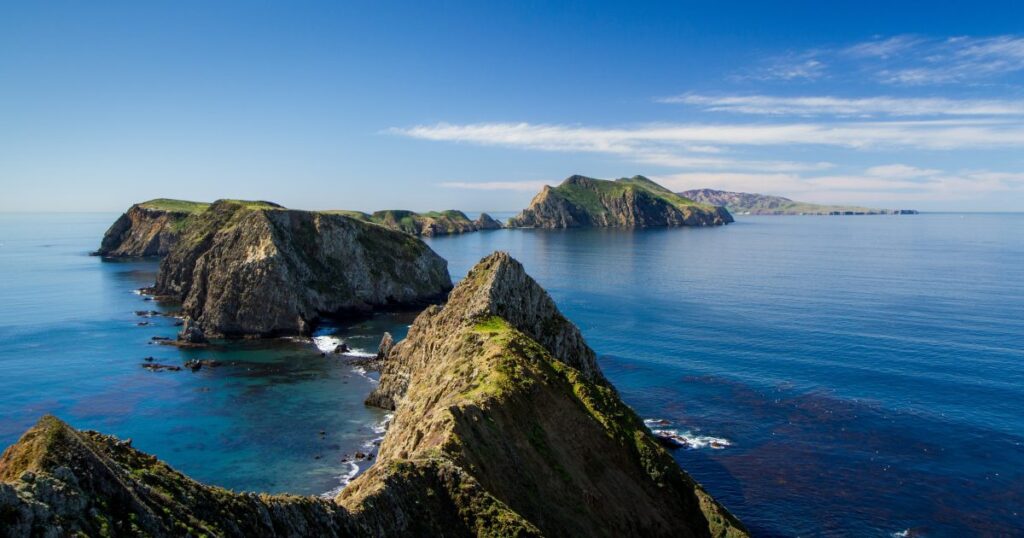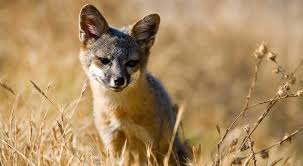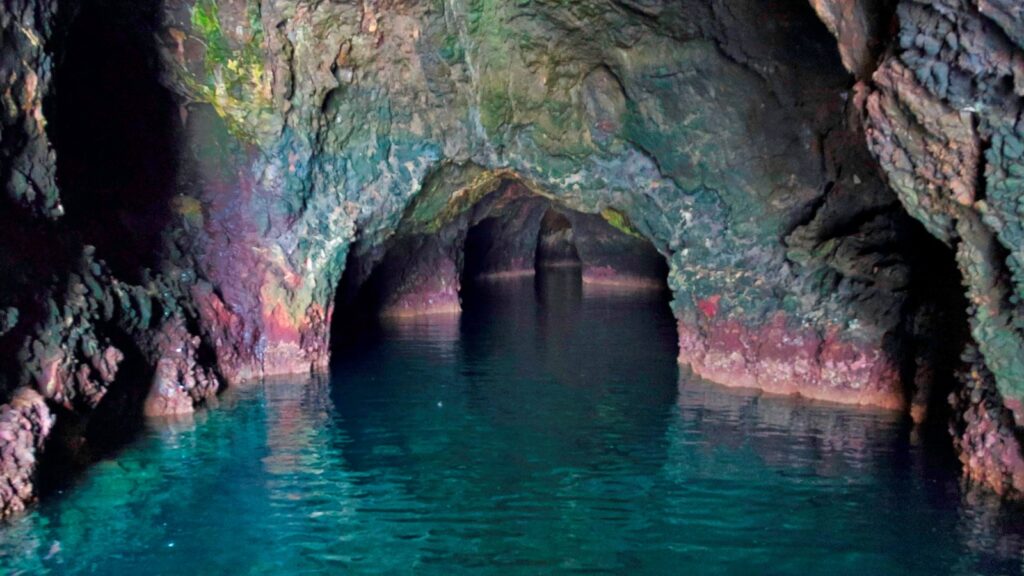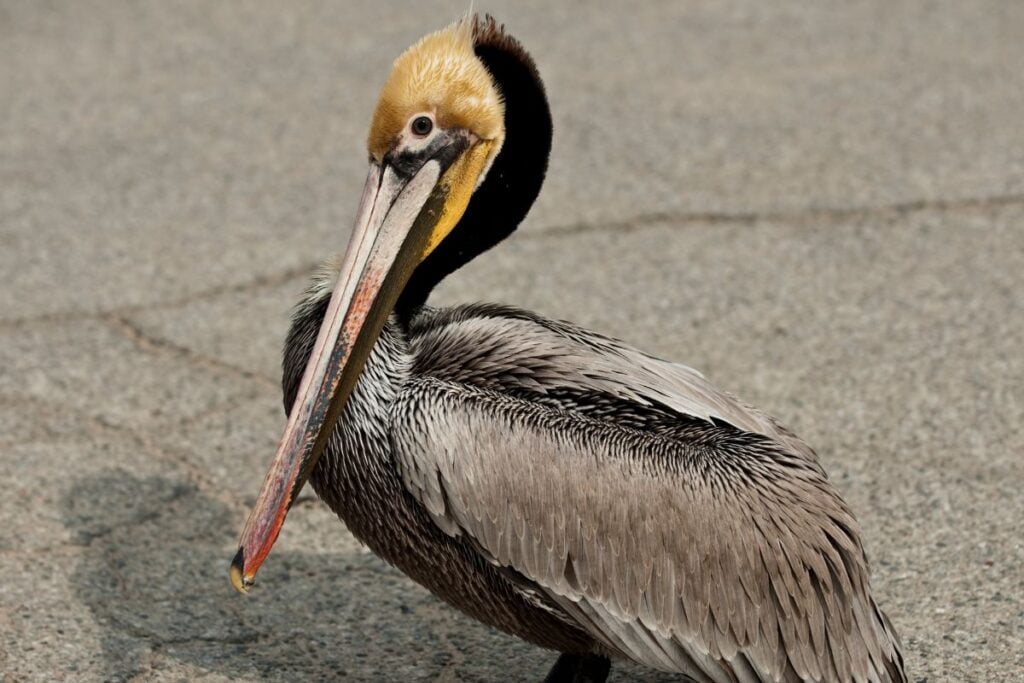Channel Islands National Park is a hidden gem that is located off the shore of southern California. It’s a large national park made up of 5 islands:
- Anacapa Island
- Santa Cruz Island is the biggest among the Channel Islands.
- Santa Rosa Island is named Island Of The Cowboys, due to its history of cattle farming.
- Santa Barbara Island
- San Miguel Island is also named the Graveyard of the Pacific because of its dangerous waters and strong winds, which have caused numerous shipwrecks (ship destructions) over the centuries.
The Channel Island National Park covers an area of 249,354 acres.
The Channel Islands is recognized as a very special & unique national park because it has plants and animals that live only on these islands. This park also consists of wonderful marine life, like dolphins, whales & sea lions.
Let’s explore together some fun facts about the Channel Islands National Park.

Fun Facts about Channel Islands National Park:
Galapagos of North America:
The Channel Islands are called the Galapagos of North America, because similar to the Galapagos Islands in Ecuador, the Channel Islands are also home to a wide variety of unique species that are found only on these islands.
The isolation of these islands has led to the evolution of distinct plants and animals over thousands of years that are much similar to the evolutionary processes observed by Charles Darwin in the Galapagos.
Like the Galapagos, the channel island is also considered an important area for scientific research.
Also Read: The Galapagos Islands Belong To Which Country?
Oldest Human Remains in North America:
The oldest human remains in North America were found on Santa Rosa Island, which is part of the Channel Islands. These remains are called Arlington Springs Man or sometimes Arlington Springs Woman (according to recent studies).
In 1959, an archaeologist Phil C. Orr from the Santa Barbara Museum of Natural History, discovered these remains at a place called Arlington Springs on Santa Rosa Island.
The Arlington Springs remains are about 13,000 years old and are some of the oldest human bones ever found in North America. Radiocarbon dating is a method used to find the age of bones. According to this, these bones are from the end of the Pleistocene epoch, a time when the last ice age was about to end.
These remains also support the Coastal Migration Theory.
This theory states that the early humans migrated to the Americas by following the Pacific coastline, instead of only traveling through an ice-free path. These early people maybe survived by using the ocean’s resources, like fish, shellfish, and other sea life.
Unique Wildlife:
Many plants and animal species live on the Channel Islands and can only be found there. This means they are endemic or unique to the islands. One well-known example is the Channel Island Fox, which lives only on these islands. There are about 150 species of plants, birds, reptiles, and other animals that are specific to the islands, much like the rare species found in the Galapagos Islands.

Largest Sea Cave in the World:
The biggest island in Channel Islands National Park is Santa Cruz Island which is famous for its many sea caves. These caves are considered as some of the most marvelous in the world.
The most famous cave is Painted Cave which is found on the northwest coast of Santa Cruz Island. It is the largest sea cave in the world. It is named a painted cave because of the bright colors on its walls, which are due to minerals, algae, and lichens that naturally grow there.

Painted Cave is about 1,227 feet long and has a huge entrance that is nearly 100 feet tall.
Besides Painted Cave, Santa Cruz Island has many other sea caves. There are hundreds of smaller caves along the coast, and many of them can be reached by kayak.
Santa Cruz Island has also become a popular location for filmmakers, because of its unique landscape & natural beauty to shoot movies, TV shows, commercials, or documentaries. In 1924, Peter Pan was filmed on Santa Cruz Island.
Safe Home for Seabirds:
The Channel Islands, especially Anacapa and Santa Barbara, are important places for seabirds to nest and breed. These islands consist largest seabird breeding colonies in the United States.
The islands provide safe places for many types of seabirds like the California Brown Pelican and Scripps’s Murrelet, which are endangered species, to lay their eggs and raise their young ones, without being threatened by predators.

The rocky cliffs & sea caves of islands make perfect nesting spots. The surrounding marine protected areas ensure that there is plenty of food for the birds.
Conservation efforts, such as removing non-native species that harm the birds, have helped seabird populations grow again. This makes the Channel Islands very important for the survival of seabirds and the health of the environment.
No Roads, No Shops:
As this park is for the conservation of wildlife so there are no roads, restaurants, or shops on any of the islands of this National Park. And if there are commercial developments then this results in habitat destruction and pollution which results in a negative impact on wildlife.
So if you visit Channel Islands National Park, make sure to bring everything you need like reusable water bottles, snacks, toiletries, etc.
Best Spot for Whales Spotting:
The Channel Islands are considered one of the best spots for whale watching in California. There are various whale species, including gray whales, humpback whales, blue whales (the largest animal with the loudest voice on Earth), and orcas that are found in the water that surrounds the Channel Islands, particularly around the Santa Cruz and Anacapa Islands. The best time for whale spotting is from December to April.
Less Visitors:
There are no direct flights to Channel Island National Park, only a few ferries and private chartered planes provide access to the islands. Due to limited access, visitor numbers are low compared to other national parks. Due to this, it is an ideal spot for peaceful and uncrowded exploration.
Frequently Asked Questions:
Where is Channel Islands National Park?
The Channel Islands National Park is located off the coast of Southern California.
How do I get to the Channel Islands?
You can reach the Channel Islands by boat or plane from the mainland.
What can I do at the Channel Islands National Park?
You can hike, kayak, camp, and watch wildlife like seals, whales and seabirds.
Are there any roads on the islands?
No, the islands do not have roads. You will have to walk or can use boats to roam in the park.
Can I stay overnight on the Channel Islands?
Yes, you can camp on some islands, but you will need a permit.
What should I bring when visiting?
Bring water, food, sunscreen, toiletries, and comfortable shoes for walking.
Are there any shops or restaurants?
No, there are no shops or restaurants on the islands. So bring your food.
When is the best time to visit the Channel Islands?
The best time to visit the Channel Islands depends on your preferred activities. The peak visitor season is from July to August. However, for a quiet and scenic experience spring or autumn are ideal.
Can I see blue whales in Channel Islands National Park?
Yes, you can see the blue whales in the water that surrounds the Channel Islands, especially during winter and spring.
Is there an entrance fee for Channel Islands National Park?
No, there is no entrance fee. However other national park services may require an entrance fee.
The Channel Islands National Park is best for wildlife enthusiasts, evolutionists, and nature lovers. There are also plenty of opportunities for photography and artistic inspiration. If you want to take a picture that will gain fame and win awards, you can do so in this national park.
In short, this national park is a must-visit destination for wildlife lovers & explorers.
Also Read: 5 Famous National Parks in USA for Wildlife Enthusiasts






